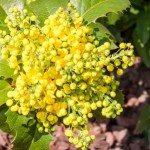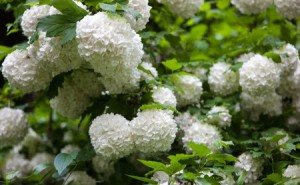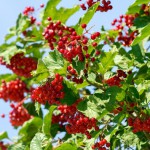Flowering Shrubs That Like Shade – My Favorites
The Challenge of Shade
Shade is a welcome feature in any landscape during the swelter of a summer day. The benefits are many, and the visual contrast provided between shady and adjacent sunny areas are beautiful. But there are challenges to growing shrubs in shady areas. Despite those hurdles, you can make this an opportunity rather than a hindrance. There are a number of flowering shrubs that like shade.
What are the challenges?
First, many plants need a lot of sunlight to grow well, and not many will grow in complete or near complete shade.
Second, if the shade is created by a large tree(s) the roots may pose a problem. Digging around exposed or shallow buried tree roots can damage the tree if you are not careful, not to mention making it difficult to dig the bed for whatever you are trying to plant. Also, if you are trying to plant under a large tree, the roots can take most of the moisture in the soil away from what you are trying to plant.
How can these issues be overcome?
Most of all, you should be prudent in planning what you are going to plant, and select plants that have been proven to survive and thrive in shade. There are several, and I am going to discuss a few of them in this article. See this article Shade Garden Plans for tips on beginning your shade garden.
Regarding the issue of planting around shallow or exposed roots, if this is something you face choose plants that are smaller and require less of a planting bed, as well as plants that don’t require much moisture. Groundcovers provide a very viable option to plant directly under large trees. There are many options to choose from. Grass is usually not a good option under trees if the shade is very dense.
Adding Color in the Shady Areas
A shade dominated area can appear fairly drab if there is no color in the midst of it. But that doesn’t need to be a problem for you if you select some of the colorful shade tolerant shrubs that are available. It is very important that you plan for your available space by knowing how much sun the area gets and at what time of the day it gets it. Know how big the shrub you will be planting is going to get and make sure that it conforms to your available space. Here are some of the best options for adding colorful shrubs into your shaded areas:
- Oakleaf Hydrangea
This is a deciduous shrub that will get to 6-8 feet high. It produces showy white flowers during the summer on top of deep green oak like leaves. In the fall the foliage turns a deep red-maroon color. It is adaptable from zones 5-9. Oakleaf Hydrangeas do like a moist soil area so if that is a concern it should be taken into consideration.
- Leatherleaf Mahonia

Leatherleaf Mahonia in bloom
This plant can stand some morning sun, but needs afternoon shade. It is a smaller evergreen shrub that attains 5 feet in height. It flowers in winter with bright yellow blooms that turn into beautiful light blue berries in the spring. This shrub is marked by its leathery deep green foliage. It adapts to zones 5-9, so it can be planted across much of the United States. A similar, smaller variety is Oregon Grape Mahonia.
- Cranberrybush Viburnum

Flowers from a Cranberry Viburnum
This is a large flowering shrub that attains up to 10 feet in height. It is deciduous with white cup like flowers in the spring and red berries in the fall. It needs a well amended, good draining soil. Because of its height it is popular as a border for privacy along property lines. The cranberrybush is hardy in zones 2-7.

An alternative variety for those in warmer climates is the Rusty Blackhaw, good in zones 6-9. Also deciduous, these plants get quite tall and wide. If desired they can be grown in tree form. They bloom with white flowers in the spring and foliage turns bright red in the fall.
- Bottlebrush Buckeye
Also a large growing shrub, at about 10 feet, this is a wonderful plant. It blooms with bottle like white flowers in the summer that turn to a lovely yellow gold in the fall. It’s deciduous and hardy in zones 4-8. The shade requirement is more pronounced in the south. It still thrives in shade in northern climates, but can also be grown in sun that is not quite as intense.
- Sweet Olive
This is an evergreen needing part shade to full shade, planted in an acidic soil base. More suitable to southern regions, it is hardy in zones 7-9. The Sweet Olive puts out white flowers in the fall, but they are not very noticeable. The main attraction of this plant is the sweet fragrance it produces, which is noticeable for quite a distance.
Summary
Shade is wonderful but it presents the gardener with the challenge of finding ways to brighten up the areas devoid of sunlight. However, using a little creativity and planning you can find ways to bring color and beauty to the otherwise darkened parts of your landscape. Many plants grow well in shade. Some of them are better planted individually, and others as a group. Many provide color, but some do not. Some need moist, acidic soil, but you can find others that do well without a great deal of moisture.
A few other excellent shrubs that do well in shade that I have not discussed here include Gardenia, Cleyera, Azalea, Camelia, Nandina, Acuba, and Spicebush. As with all others, research the different varieties and choose the ones that fit your individual desires and landscape requirements.
Most of all, enjoy your garden!
3 thoughts on “Flowering Shrubs That Like Shade – My Favorites”
Great article. I live on the West Coast in the mountains and my place gets more shade than sun. Would any of these plants grow as a potted plant? They sound like they grow quite large so maybe a pot isn’t the best choice? I have a patio that I want some color on. Thank you.
C-L,
At their mature size all of the plants I listed would be too big to grow in pots. You could purchase them in small one gallon containers and start them out in pots. That might be what you want to do. If you go to a local garden center you should be able to get several ideas about what sort of pots would look good on your patio and would go well with your existing landscape.
David